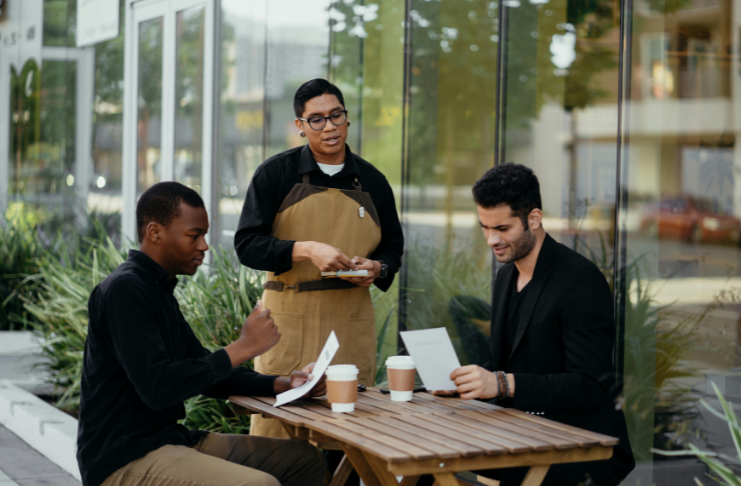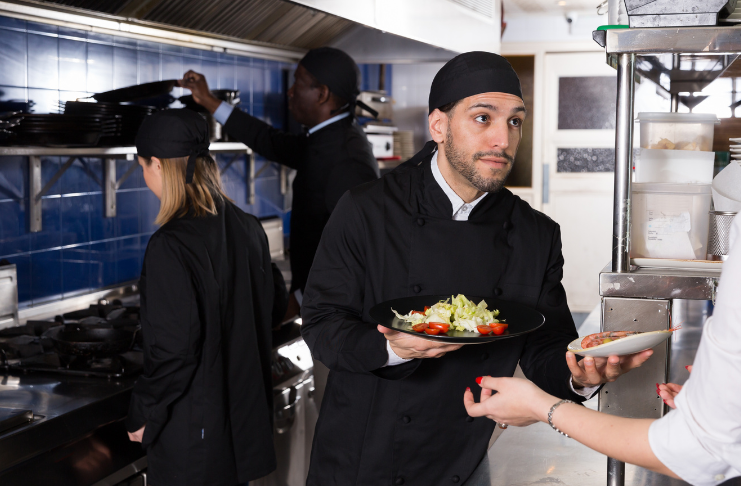
Taking orders from customers is essential for the smooth operation and success of any restaurant, café, or food service business. A smooth and efficient order-taking process ensures customer satisfaction, reduces errors, and increases operational efficiency. Whether you run a dine-in restaurant, a takeout service, or an online ordering platform, mastering how to handle orders from customers can directly impact your revenue and reputation.
Understanding the Order-Taking Process
The process of taking orders from customers varies depending on the business type. Here are the main methods:
- Dine-in Orders: Customers place orders with waitstaff who enter them into a POS (Point of Sale) system.
- Takeout Orders: Customers call ahead or visit in person to place their orders for pickup.
- Online Orders: Orders are placed through a restaurant’s website, mobile app, or third-party delivery apps.
- Phone Orders: Customers call the restaurant to place their order, which staff then manually input into a system.
- Drive-Thru Orders: Orders are taken via a speaker system, with customers paying at a designated window before receiving their food.
Steps to Take Orders from Customers Efficiently
Step 1: Greeting Customers Professionally
A warm and friendly greeting sets the tone for the ordering experience, whether a customer is ordering in person, over the phone, or online, first impressions matter.
- Use a friendly and welcoming tone.
- If greeting in person, make eye contact and smile.
- For phone and drive-thru orders, maintain a clear and professional voice.
Example: “Welcome to [Your Restaurant Name]! How can I take your order today?”
Step 2: Providing the Menu and Assisting Customers
A well-organized and easy-to-read menu—both digital and physical—helps simplify the food order-taking process. Helping customers understand the menu improves their overall experience and ensures they make informed choices.
- Offer menu recommendations based on customer preferences.
- Highlight specials, combos, or discounts available.
- Answer questions about dietary restrictions, allergies, and ingredient details.
Step 3: Taking Orders Accurately
Order accuracy is crucial for avoiding mistakes and ensuring exceptional customer service and satisfaction.
- Listen carefully to what customers order.
- Repeat the order back to confirm details.
- Use a POS system to record orders efficiently.
- For manual orders, write clearly to avoid confusion.
Example:
- Incorrect: “You wanted the burger with fries, right?”
- Correct: “You ordered a cheeseburger with no onions, a side of fries, and a Coke. Is that correct?”
Step 4: Suggestive Selling & Upselling
Upselling enhances the order value while offering customers a better experience.
- Suggest complementary items: “Would you like a side of garlic bread with your pasta?”
- Highlight promotions: “For just $2 more, you can upgrade to a large drink.”
- Recommend bestsellers: “Our homemade cheesecake is a customer favorite—would you like to try it?”
Step 5: Communicating Orders to the Kitchen
Clear communication between the front-of-house and kitchen ensures a smooth workflow.
- Use a POS system or Kitchen Display System (KDS) to send orders digitally.
- For manual processes, ensure legible handwriting on order tickets.
- Be attentive to special requests and dietary restrictions. Confirm with the kitchen staff if you are unsure about any ingredients or modifications.
Step 6: Confirming & Processing the Order
Before finalizing the order:
- Double-check for errors before sending the order to the kitchen.
- Address modifications carefully, ensuring allergy requests are properly noted.
- Ensure the correct payment method is applied.
Step 7: Delivering Orders Promptly & Professionally
Whether dine-in, takeout, or delivery, the presentation of the order matters. Ensuring timely and accurate delivery of orders from customers enhances their overall dining experience.
- For dine-in: Food should be served hot and fresh, with staff checking back to ensure customers are satisfied. Prompt service and attentiveness enhance the overall experience.
- For takeout: Secure packaging to prevent spills or leaks. Clearly labeling each order helps avoid confusion, ensuring accuracy.
- For delivery: Double-check that all items, including condiments, utensils, and napkins, are included. Secure packaging maintains food quality, and timely delivery ensures a great experience.

Step 8: Handling Payments & Closing the Order
A smooth checkout process leaves a lasting impression.
- Restaurants should accept multiple payment methods, including cash, credit cards, and digital wallets, to offer convenience and flexibility.
- For dine-in customers, checking for any last-minute requests before presenting the bill adds a thoughtful touch. For takeout and delivery, verifying payments and offering loyalty incentives can strengthen customer relationships.
- Thank the customer and invite them to return. For example: “Thank you for your order! We hope you enjoy your meal and visit us again soon.”
INDSTRY INSIGHT
McDonald’s is implementing artificial intelligence across its 43,000 locations to enhance service speed and improve customer and employee experiences. The upgrades include smart kitchen equipment and AI-enabled drive-throughs. This innovation aims to ease the stress on employees and grow the customer base from 175 million to 250 million by 2027.
Using Technology to Improve the Order-Taking Process
Technology plays a vital role in improving how businesses handle orders from customers.
- POS Systems: A well-functioning POS system streamlines the process of taking orders from customers. Advanced POS systems integrate with inventory management, payment processing, and customer relationship management, improving overall efficiency. Ensure that staff are trained to use the system effectively and can quickly enter orders without mistakes.
- Online Ordering Platforms: Many customers prefer to place orders online or through mobile apps. Integrate these platforms with your POS system to ensure seamless order processing. This will allow customers to place orders even when not dining in easily. It will also reduce congestion during peak hours and enhance convenience for customers who prefer takeout or delivery.
- Self-Ordering Kiosks: A contactless, efficient, and user-friendly way to take customer orders. These interactive screens allow customers to browse the menu, customize meals, and complete transactions without staff intervention. Self-order kiosks reduce wait times, increase order accuracy, and boost sales by suggesting upgrades and add-ons.
Common Challenges & How to Overcome Them
Even with the best practices, businesses often face challenges in taking orders from customers:
- Miscommunication & Order Errors: The best solution is to use POS systems for accurate entry and to repeat orders to verify them before finalizing them.
- Dealing with Difficult or Indecisive Customers: Staff should remain patient, offer menu recommendations, and highlight bestsellers or promotions to assist with quicker decision-making.
- Handling Peak Hours & Large Orders: To reduce wait times, businesses should pre-plan workflows, optimize kitchen coordination, and utilize self-service technology, such as self-order kiosks and mobile ordering.
Conclusion
Taking orders from customers efficiently is key to enhancing customer satisfaction and streamlining restaurant operations. Whether through POS systems, online ordering, or self-order kiosks, leveraging technology improves accuracy and speed. Well-trained staff providing exceptional service, clear communication, and a seamless checkout process further enhance the experience. By continuously refining the order-taking process, restaurants can boost sales, build loyalty, and create a smooth, hassle-free experience for every customer.
Frequently Asked Questions
- Greet the customer.
- Present the menu and specials.
- Listen to the customer’s order.
- Ask clarifying questions if needed.
- Repeat the order back to the customer.
- Enter the order into the POS system.
- Thank the customer and confirm the order.
To take an order from a guest, greet them warmly and present the menu. Listen attentively to their order and ask clarifying questions if necessary. Repeat the order back to ensure accuracy. Enter the order into the POS system promptly and thank the guest for their order. This process ensures a smooth, accurate, and pleasant experience for both the guest and the restaurant.
Use active listening, ask helpful and clarifying questions, repeat the order back to the customer, and use a reliable POS system to ensure accuracy.
It is called “order-taking” from customers. It involves recording customers’ requests accurately, ensuring their satisfaction, and transmitting the orders to the kitchen or relevant staff for preparation. Effective order-taking is essential for delivering a seamless and pleasant dining experience.
Greet the customer, listen carefully to their order, ask clarifying questions, repeat the order back, and enter it accurately into the POS system.












